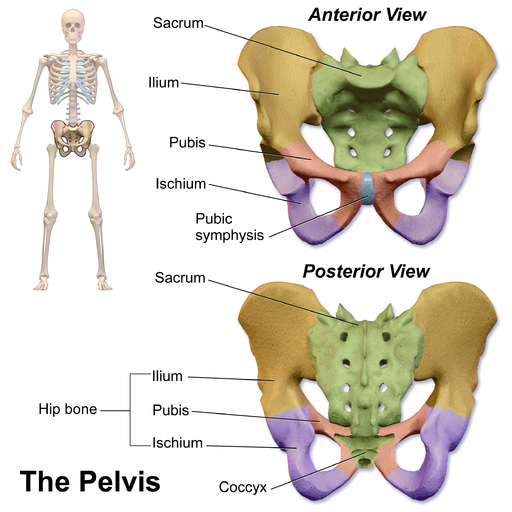Your Tailbone is a Rudder
by Dominika Borovansky Gaines
As we all know, one of the beauties of the GYROTONIC EXPANSION SYSTEM® is its focus on coordinated movements of the whole body and restoring strength and mobility to all the joints, in particular those of the spine. As instructors we have many ways to encourage this action: first we emphasize initiating from the solar plexus as a means to create decompression during flexion and extension. Then as the connection deepens and movement becomes stronger we shift our awareness down to the "seed center" or t'an tian.
Over the past year I have begun exploring the power of the pelvis. I've been experimenting with physical and imagery-based cues for moving the pelvis, utilizing the breath as an initiator and facilitator and experiencing the subtlety of the joints. This has been very enriching both personally and in the work I do with my clients.
In this blog I wish to share with you my discovery of the coccyx as a place of movement initiation. Until recently, every time I heard a cue related to the tailbone, I mistakenly visualized my sacrum. Cues to "drop the tailbone,” "imagine your tailbone as a heavy dinosaur tail,” and "lift your tailbone" were misinterpreted in my mind. I imagined these cues directed at the triangle of my sacrum. Admonishments about sitting too frequently also use a tailbone reference – "get off your tailbone!" Because so many of us sit with a posteriorly-tilted pelvis, my image of the sacrum persisted.
And then I had my "aha" moment where I realized that "tailbone" is not referring to the big flat bones in the back but the little tiny bones of the coccyx!
Your pelvis is comprised of the following bones: innominate bones (2), sacrum, and coccyx. The coccyx is literally our vestigial tail, made of up 2, 3 or 4 bones that may or may not be fused. The coccyx is also an attachment point for several ligaments and numerous muscles. These muscles support the pelvic floor and the position of the anus and assist with hip extension via fibers of the gluteus maximus. Great explanations can be found here.
As I've been exploring movement initiation from the coccyx, I have found it to be very productive in releasing tension in my hip joints and pelvic floor and have begun to sense how these tension patterns affect my gait and stance. A lack of movement at the tailbone may create a host of problems throughout the body (look at all the nerves that travel through and around this area) and those who've injured theirs can vouch for how painful a bruised or broken one is. This makes movement of the tailbone that much more important for overall health.
One exercise in Level 1 GYROTONIC® progressions where I've found cueing the tailbone most useful is Double Leg Circles. As part of a movement series exploring the relationship between the femurs, pelvis and sacrum, Double Leg Circles’ focus is on lateral flexion of the lumbar spine. Critical to performing this exercise well is the ability to move the legs from the core of the body, at the seed center, rather than from the legs at the knees or thighs.
Over the years I've experimented with various props to make the movement more easeful, including placing a weight plate on the lower belly and/or placing a rotational disc under the pelvis. Yet I have found that students and clients have a tendency to twist the legs to create the action. Hands-on cueing distracting the femurs and reaching one sit bone and then the other has been useful. But I was still dissatisfied -- until I began to experiment with the image "Your Tailbone is a Rudder."
Like the fin of a fish or the rudder of a sailboat, your tailbone has the ability to move side-to-side (wagging). (It also has the ability to nutate and counter-nutate - forward and back-- and create figure eights.) To create the lateral flexion of the lumbar spine (side-bending) in Double Knee Circles, visualize the tailbone steering the pelvis. Imagine the coccyx swinging to the right and allow the natural right-side bending to follow; repeat swinging the tail to the left. By initiating the movement from here, we take the attention away from the hip joints, decreasing tension, and the movement is driven from a deep, bony rhythm, which makes it less muscular.
Watch my video here as you explore this movement.
The GYROTONIC method gives us so many beautiful movements to liberate our bodies and return them to ease. Once you've explored the idea of your coccyx as a rudder, notice how much freedom you feel in the hip joints and lower back. Take a walk and imagine your tailbone moving. I hope this image may help you and your clients to find this playful, joyful freedom-- because who isn't happy when they wag their tail?!



